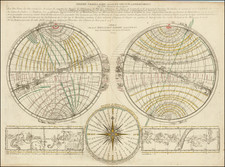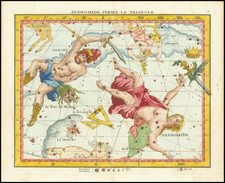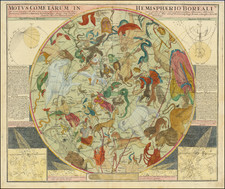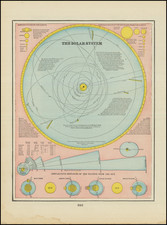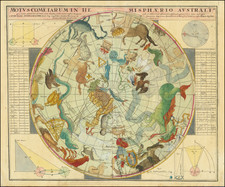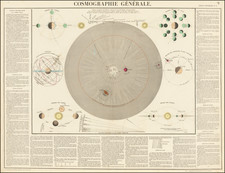Fascinating celestial map, printed to accompany Jacques Gaffarel's Curiositez Inouyes sur la Sculpture Talismanique des Persans: Horoscope des Patriarches, et Lecture des Estoilles, first published in Paris in 1629
The present map is an important work of Jewish astrology, intended to represent the Heavens using Hebrew Characters, first appearing in expanded 1650 edition of Gaffarel's work. It was intended to illustrate the section on astrological practices in the ancient Near East, particularly among the Israelites and Persians.
Jewish astrology developed independently from the mythology and star-gazing of the ancient Greek and Roman civilizations. Gaffarel included in his work a depiction of "the Celestial Constellations expressed by Hebrew characters", and asserted that the letters of the Hebrew alphabet could be interpreted from the constellations and that the heavens could be read as if a book. For the Hebrew letters, Gaffarel draws from the designs of "Rabbi Chomer." Among Gaffarel's other sources was Kapol ben Samuel's Amuq amuqim, published in Cracow in 1498.
Jacques Gaffarel (1601-81), was a theologian and orientalist, whose work grew out of the Renaissance Platonist and Christian cabbalist traditions. He served as Librarian to Cardinal Richilieu and was considered a profound astrologer. Curiositez Inouyes was very well received, and went through several editions in French, as well as being translated into English ( Unheard-of Curiosities: Concerning the talismanical sculpture of the Persians; the horoscope of the patriarkes; and the reading of the stars) and Latin.
Gaffarel's work enjoyed phenomenal success. René Descartes read this work with interest and the French physician and mathematician Pierre Gassendi (1592-1655) defended it. Unheard-of Curiosities was one of 1,500 books in the Library of Sir Thomas Browne and one of the varied sources of his encyclopaedia entitled Pseudodoxia Epidemica. Browne alludes to Gaffarel's astrology in The Garden of Cyrus thus:
Could we satisfy our selves in the position of the lights above, or discover the wisdom of that order so invariably maintained in the fixed stars of heaven......we might abate.....the strange Cryptography of Gaffarell in his Starrie Booke of Heaven.
Gaffarel contributed to the debate between Marin Mersenne and Robert Fludd. Whiled the Theological Faculty at the Sorbonne rejected Gaffarel's work and ridiculed him, Gaffarel gained the protection of the powerful Cardinal Richelieu, who made him his librarian and sent him to Italy, Greece and Asia in search of rare books (reportedly including manuscripts by Pico della Mirandola).









